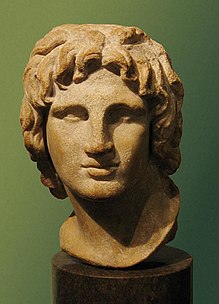The Hebrew Era of the Second Temple
(600 B.C.E.- 70 C.E.)

(The Second Hebrew Temple recreation idea of what we think this building looked like).
G - The Second Hebrew Temple was built by the Hebrew People, and was located in the center of Jerusalem.
 (This picture is the map of Israel with Jerusalem labeled as a star).
(This picture is the map of Israel with Jerusalem labeled as a star).
R - The religious beliefs of the Hebrews was Judaism. The people believed in one almighty God (Adonai). Along with the beliefs of God, a famous Rabbi named Maimonides wrote a universally accepted list of Jewish beliefs. Of the thirteen items listed, some include:
1. God exists, and is the Creator.
2. God is One and Unique.
3. God is not Physical
4. God is Eternal.
5. Prayer is to be only directed towards HaShem ( real translation: "The Name." Colloquially accepted as one of Adonai's other names).
6. The words of the Prophet are true.
7. The prophecies of Moses are true; He was the Greatest Prophet.
8. The Torah was given to Moses.
9. There will be no other Torah.
10. God knows the thoughts and beliefs of all.
11. God rewards the Good, and punished the Wicked.
12. The Messiah will come.
13. The Dead will be Resurrected.
The Jewish values and beliefs are based on the teachings of the Torah, the Jewish bible. The Torah teaches people how to conduct their life, how to act, and how to experience life and death. The Torah contains 613 'mitzvot'(מצות), or commandments, of which each Jewish person must live and abide by. The Torah is made up of the Five Books of Moses: Genesis, Exodus, Leviticus, Numbers, and Deuteronomy. Following the Torah, there is the Haftorah. The Haftorah is a book of selected Prophet readings, which is read on the Sabbath.
 (This is a Jewish Star. The most iconic of symbols the Jewish religion has).
(This is a Jewish Star. The most iconic of symbols the Jewish religion has).
A - The arts of the Jewish people includes music, pottery, and architecture, etc...
The Jewish music melodies have evolved tremendously throughout the course of the 4000 year time span. In some instances, Jewish music can be religious in nature, spiritual songs, or have further classifications in the Secular world of Judaism. The music history spans back to the beginning of the cantorial, and synagogal Temple melodies and rhythms from the Biblical times. Specifically to the Second Temple era, a regular canotrial orchestra consisted of ancient instruments such as the: 'uggav,' and a number of male singers, with one being the main Cantor.
Pottery of the Jewish people during the Second Temple era flourished greatly. The people began making more elaborately designed bowls, plates, cups, and ceremonial ceramic equipment. Artistic inspiration and influences came from the Phoenicians and Mycenaeans.  (This photo is a bowl of a Jewish Hanukkiah.)
(This photo is a bowl of a Jewish Hanukkiah.)
 (This photo is a bowl of a Jewish Hanukkiah.)
(This photo is a bowl of a Jewish Hanukkiah.)
The architecture during the Second Temple era was magnificent. For one, there was the Second Temple. The Second Temple was about 480 x 300m (about the size of six football fields put together). Each main wall of the temple is 5 meters thick with stones weighing from 2-100 tons each. There is no mortar between each individual stone. The fine maneuvering of the stones is incomprehensible given that today's modern technology cannot move such heavy stones. The height of each wall was about as tall as a 20 story building. King Herod, the one who ordered the building, compiled materials for the project for over eight years, and then had a workforce of over 10,000 men, plus an additional 1,500 specifically trained priests and holy men who were only permitted to work on the holiest parts of the temple itself. The construction was finished twenty years after its start. When finally completed, the magnificent creation, the temple could hold well over 200 thousand people within its walls.
S - The social developments of the Jewish people during the Second Temple Era was very religiously based, and very humanistic based. The Jewish people believed in certain rituals and sacrifices or offerings for a specific time and occasion. In more detail, the Jewish people in the ancient times, and now still believe in the concept of 'G'milut Chasadim' (גמילות חסדימ), which are the acts of loving kindness. These actions include Tzedakah (צדקה), the giving of money or support to others, and the commandments of 'mitzvot' (מצות).
P - The politics of The Second Temple Era consisted of a monarchy. King Herod reigned at the time, but as well as his monarchy, all of the political leaders took inspiration for their reign from the highest temple priests. (A high priest of the Second Temple).

E - The economy of Ancient Israel during the Second Temple Era consisted of labor, crafts, trade, and a coinage system. Field labor and craft production was a very important economical necessity. The Israelites traded these items more than any other around the world. The Israelite traders played a key role in shaping the first international sea trade in the Mediterranean. The traders traveled between Egypt, Cyprus, and Greece. The imports from Greece and ideas were very influential in shaping Ancient Israel. The olive tree and its oil are very significant for example. Along with another influence, the Second Temple portrays very Greek-like aspects. The immensely large pillars that stand are inspired from the Greeks' Doric and Ionic columns.
D - The exact demography of the Hebrews during the Second Temple Era is sparse, but it is said that there were as many as fifteen different surrounding cities with well over 100,000 inhabitants each. It is reported that during several different reigns, the population ranged from 650,000 up to 5,000,000 inhabitants. The highest population was when King David reigned. These census totals are not exact, but do give a close insight on how large the Jewish community was during Ancient Israel.
I - Although there were not many intellectual developments during the Second Temple Era, they were nonetheless the very important. Advances of knowledge were achieved in architecture, and travel. Historians and architects are still in awe of the magnificent creation of the Temple. Today we still do not fully understand how the Temple was exactly built, and how the people were able to lift and place the blocks in without the slightest of error. Along with architecture, advancements is travel also occurred. The people began to make more elaborate ships and vessels in which they could travel and trade all over Europe and Africa. (This is a picture of some of the ancient trade routes.)

T - Technology of the Second Temple Era was very similar to the other technology present in the world. The Israelites had technology of transportation, construction, entertainment, arts and ceramics, and of agriculture. The Israelites had many of the same modern work occupations. For example, agriculture. The Hebrews farmed and supplied surpluses of food for their people, and as well for trade and commerce. Along with the agricultural technology, such as plows, and human-animal wagons, the Hebrews also had the earliest of fire kilns. These kilns were basically gigantic enclosed fire pits in which the ceramics sat and solidified. People still today do not know the exact means of how the Temples were built, but with such an elaborate lay out, and immense size, the Hebrews must have had an advanced means of technology in which they could use to build such creations.
 (This picture was taken of my face carved in stone. Thanks Google Images).
(This picture was taken of my face carved in stone. Thanks Google Images).